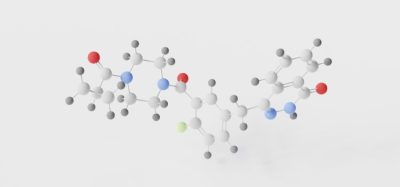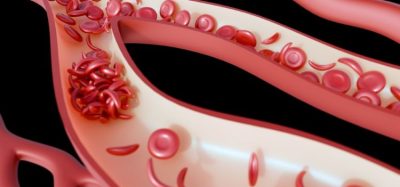Multi-million funding for cryo-EM to boost structural biology revolution
Posted: 27 July 2017 | Dr Zara Kassam (European Pharmaceutical Review) | No comments yet
US science minister announce new multi-million-pound commitment to boost the burgeoning field of cryo-electron microscopy (cryo-EM) in the UK.


UK Minister for Universities, Science, Research and Innovation Jo Johnson announced last week a new multi-million-pound commitment to boost the burgeoning field of cryo-electron microscopy (cryo-EM) in the UK.
A total of £11.3 million for cryo-EM facilities has been awarded to the universities of Glasgow, Oxford and Leicester.
The funding, awarded by the MRC after working in partnership with Wellcome, will establish two new consortia – one across Scotland, led by the MRC Centre for Virus Research at the University of Glasgow, and another in the Midlands, led by the University of Leicester. It will also support a new dangerous pathogens containment facility in Oxford. These awards complement the recent £20m Wellcome investment in cryo-EMopens.
These exciting developments come at a crucial time, with the field of structural biology undergoing a ‘resolution revolution’. Cryo-EM developments have dramatically improved the quality and range of biological structures that can be revealed.Technology and infrastructure are at the heart of this revolution, with technical advances pushing the science forward. Instruct is a pan-European partnership giving researchers vital access to advanced instrumentation and the necessary training. The equipment is typically very expensive and requires specific technical experience. The MRC has supported Instruct, on behalf of the UK, since its inception.
The new legal status for Instruct transforms it into a European Research Infrastructure Consortium (ERIC), joining 16 others across Europe. As the second UK-hosted ERIC, Instruct-ERICopens will provide the European structural biology community with continued access to high-quality, stable and sustainable services.
Over the past four decades, European researchers – including MRC-funded researchers in the UK – have played a pivotal role in developing increasingly sophisticated and super-powerful cryo-electron microscopes.
The name ‘cryo’ refers to the way researchers keep their samples still, by flash-freezing them in extremely cold (cryogenic) temperatures. This approach bypasses the lengthy, and often difficult, process of crystallising samples and maintains them in a more physiologically natural state. Researchers now have the incredible capacity to view molecules at near-atomic level, in far greater detail than was previously possible. This detail allows them to understand how the molecular machines in our bodies work and determine the building blocks of proteins, viruses and cells. Cryo-EM is allowing researchers to better understand how diseases, like Alzheimer’s disease, affect the brain, and how specific molecules involved in causing disease might be targeted with drugs or vaccines.
Recent structural biology research, using cryo-EM methods at the MRC LMB, revealed for the first time the atomic structures of one of the two types of the abnormal filaments which lead to Alzheimer’s disease. This is an example of how the technology can help us understand the makeup of proteins; understanding the structure of tau filaments will be key to developing drugs to prevent their formation.
This new funding for further cryo-EM facilities, combined with the new status of Instruct-ERIC, will enable the best and brightest minds across Europe to continue to share knowledge and state-of-the-art equipment, to advance discovery science and improve human health.
Professor David Stuart, Director of Instruct-ERIC and MRC Professor at the University of Oxford, said: “Continued stability for partnerships across Europe is invaluable at this critical and exciting time for structural biology. International collaboration has always been important for structural biology as we need the collective knowledge and skills of chemists, physicists, computer scientists and biologists to develop the technology, before we can advance the science. Today’s announcements represent a welcome commitment to strengthening infrastructure, research collaborations and enabling the brightest minds to work together across borders.”
Dr Nathan Richardson, MRC Head of Molecular and Cellular Medicine and Chair of Instruct-ERIC Council, said: “This cryo-EM investment is an important commitment, showing our full support for structural biologists during this structural biology revolution. MRC researchers have been critical in recent developments in cryo-EM technology. We’re delighted to be able to provide extra support, complementary to other investments, enabling access for even more researchers to cutting-edge technology at a crucial time, allowing them to tackle the biological questions that will help advance human health.”
Related topics
Related organisations
European Research Infrastructure Consortium (ERIC), MRC, University of Glasgow, University of Leicester, University of Oxford, Wellcome








